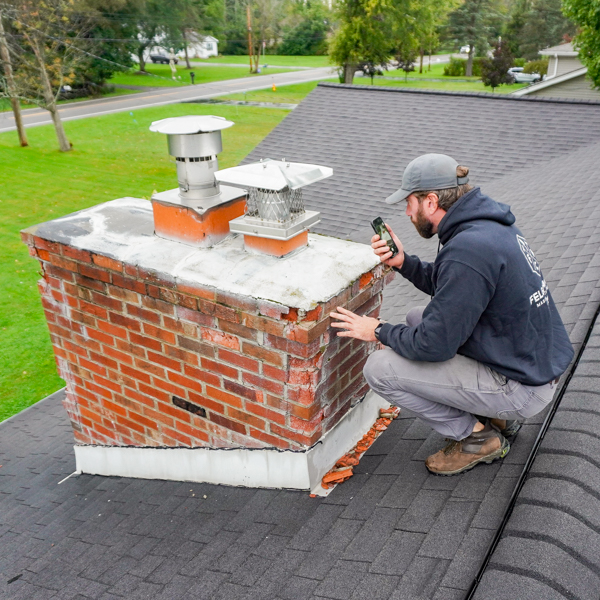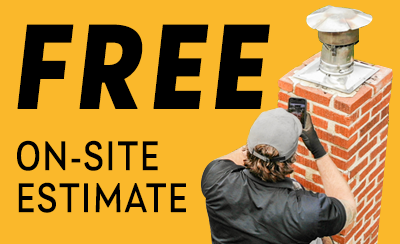Dangers of Using Your Fireplace Without an Inspection
Igniting your fireplace can be deadly if it hasn’t been inspected recently. No matter what fuel your fireplace burns—wood or gas—you should have your fireplace checked out by professional technicians once a year. A chimney inspection could save your life!
 What is a chimney inspection?
What is a chimney inspection?
A chimney inspection is a routine maintenance check for fire hazards and structural problems that could endanger you or your home.
According to the Chimney Safety Institute of America (CSIA), there are three levels of chimney inspections. A CSIA-certified chimney service will perform a level one inspection when you schedule a chimney cleaning or annual inspection. (Level two or three inspections are reserved for a damaged chimney.)
A level one chimney inspection includes a visual assessment of the chimney’s interior and exterior. A CSIA-certified chimney sweep or technician will look for:
- Obstructions
- Damaged fireplace components
- Cracked masonry
- Signs of moisture problems
Afterward, you will receive a report that lists any issues they discovered and recommendations. For example, they may recommend a chimney sweeping if they saw obstructions or creosote buildup in your fireplace’s ventilation system. Or they might recommend a higher level of inspection if they spotted signs of damage that they need to get a close look at with a video camera (level two) or by removing sections of the chimney (level three).
 Why is a chimney inspection a safety precaution?
Why is a chimney inspection a safety precaution?
Chimney inspections save lives by preventing fires and carbon monoxide poisoning.
Chimney fires occur more frequently than most homeowners realize. Creosote, a flammable combustion by-product that builds up along chimney walls, is the leading cause of fireplace-related fires. A hot ember or high temperatures can ignite even small amounts of creosote buildup inside your chimney.
While some chimney fires spread and turn into house fires, many are contained in the flue (chimney interior). Felgemacher’s service team often discovers the signs of a chimney fire during their inspections. However, you shouldn’t rest easy when you find out that your chimney has already sparked a fire. The damage left behind by a chimney fire turns your flue into a dangerous fire hazard. Using your fireplace in the future is more likely to lead to a deadly house fire or carbon monoxide poisoning if the damage isn’t repaired.
Carbon monoxide is the number one cause of poisoning deaths in the United States. It is a toxic gas produced when you burn fuels like wood, gas, charcoal, or wood pellets. Your home could be filled with dangerous levels of carbon monoxide if your gas fireplace malfunctions or your wood fireplace’s chimney is obstructed. Since carbon monoxide is tasteless, odorless, and colorless, you may not realize it’s leaking into your home until it is too late.
An annual chimney inspection is an easy and affordable precaution that significantly reduces your risk of a house fire and carbon monoxide poisoning. A certified chimney technician will inspect your fireplace or chimney that might spark a fire or cause a carbon monoxide leak. If they discover a problem, they will let you know and recommend the best option to repair your chimney.
Before you use your fireplace this winter, give us a call to speak with our service team and schedule an inspection to keep your family safe!





